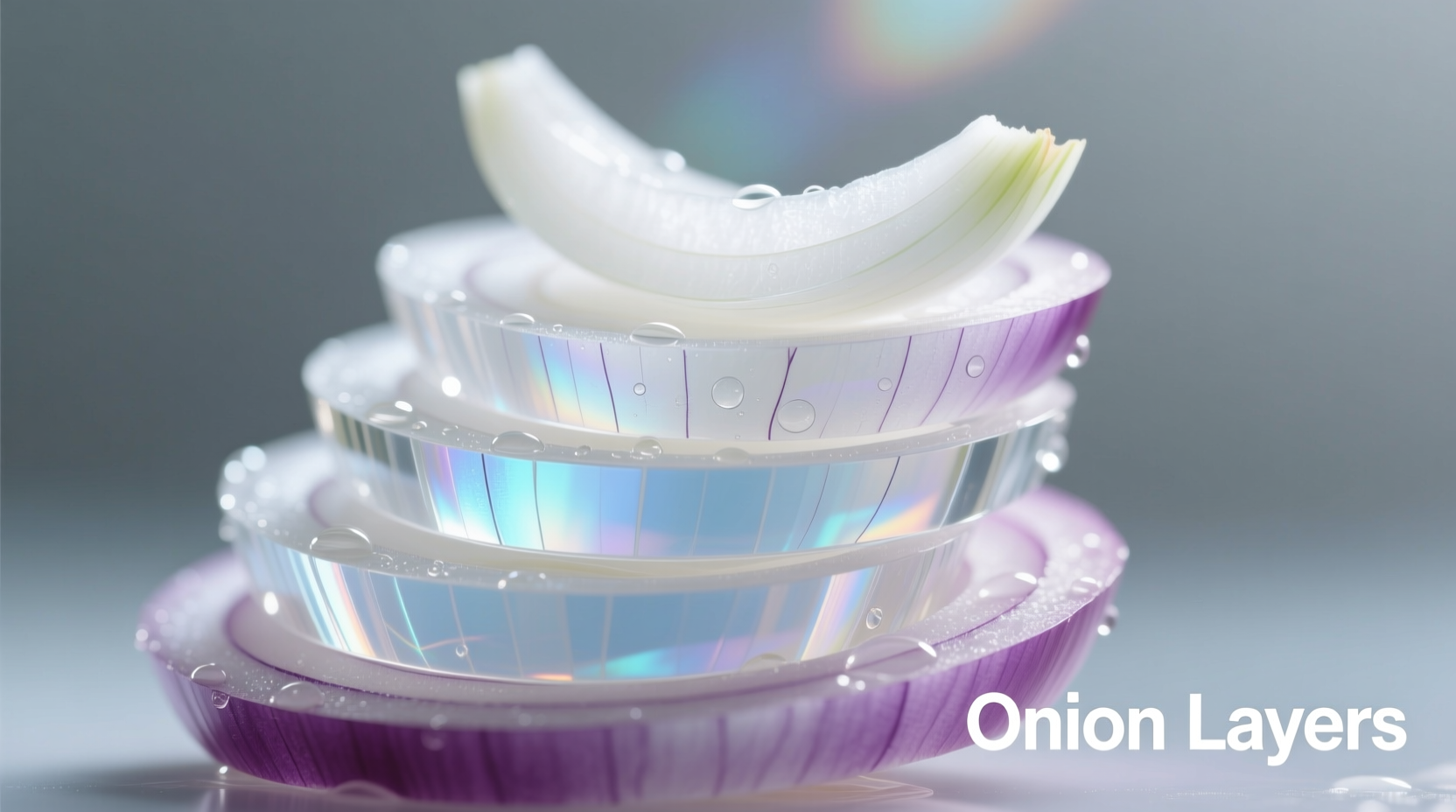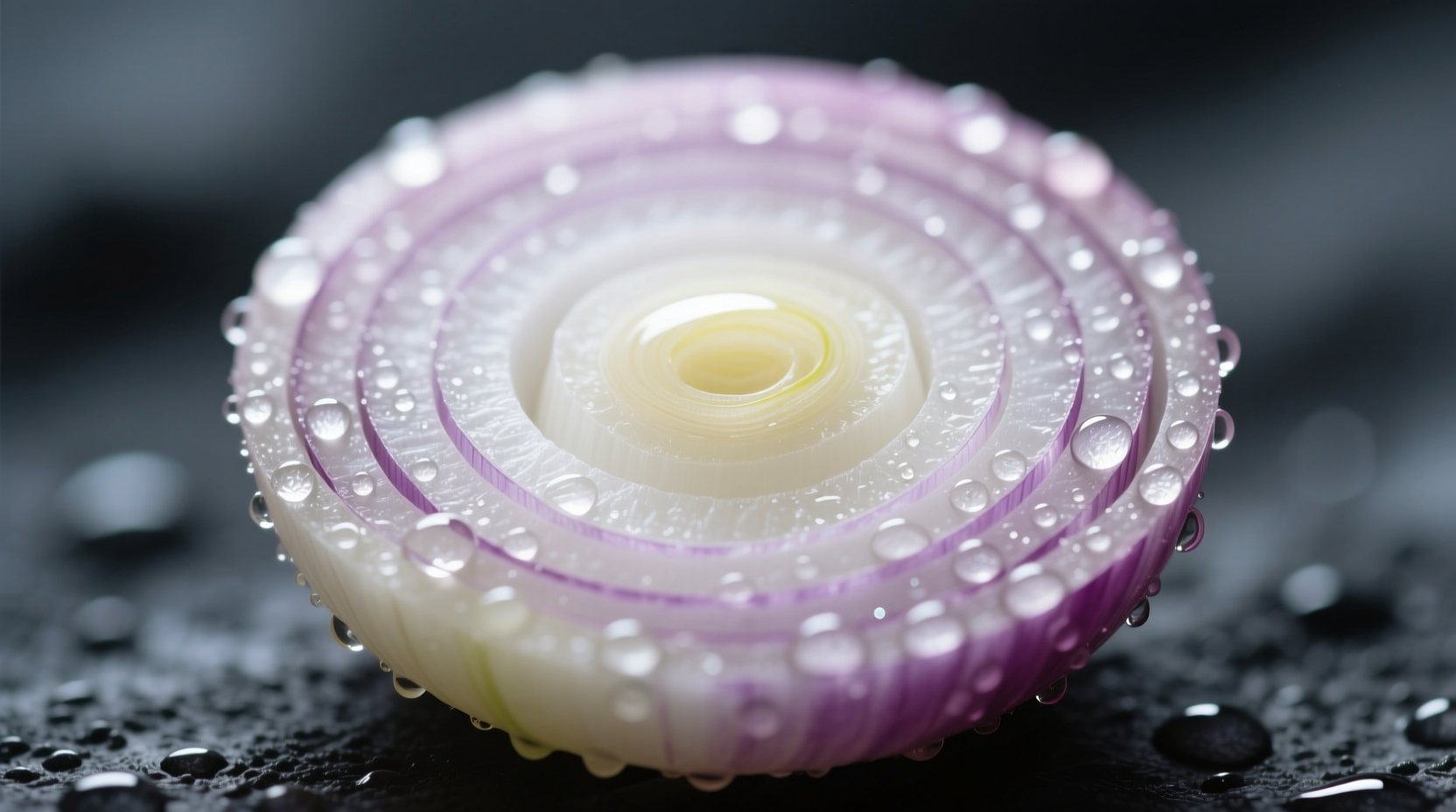When you slice into an onion and notice an unusual translucent appearance, your first thought might be concern. Is this normal? Has it gone bad? The truth is, translucency in onions is typically a positive indicator of quality rather than spoilage. Unlike slimy, mushy, or discolored onions that signal deterioration, a translucent onion usually demonstrates optimal storage conditions and natural sugar development.
The Science Behind Onion Translucency
Onion translucency occurs due to natural biochemical processes within the bulb. As onions mature and store properly, their starch content gradually converts to sugars through enzymatic activity. This sugar development creates a more translucent appearance in the layers. According to research from the USDA Agricultural Research Service, this transformation typically happens when onions are stored at temperatures between 32-45°F (0-7°C) with 65-70% humidity.
The translucent quality specifically results from changes in the onion's cellular structure. As storage progresses, the cell walls become more permeable, allowing light to pass through more easily. This process, called "cellular clarification," enhances the onion's natural sweetness while maintaining firm texture—making it ideal for culinary applications where subtle flavor is preferred.
| Translucent Onion Characteristics | Normal Onion | Spoiled Onion Indicators |
|---|---|---|
| Clear, glass-like layers | Opaque white layers | Gray or black discoloration |
| Firm texture throughout | Firm texture | Mushy or slimy spots |
| Sweet, mild aroma | Sharp onion scent | Sour or fermented smell |
| No dark spots or mold | No blemishes | Visible mold growth |
When Translucency Indicates Quality, Not Spoilage
Many home cooks mistakenly discard translucent onions, not realizing they've found a culinary gem. Professional chefs actually seek out this quality for specific applications. The key difference between desirable translucency and actual spoilage lies in texture and additional visual cues.
Translucent onions maintain firmness throughout the bulb. When you press gently on the layers, they should spring back rather than yielding permanently. The translucency should be uniform across the layers without any dark spots, mold, or slimy patches. If your onion shows translucency but also has soft spots, an off smell, or visible mold, then it has indeed spoiled and should be discarded.
According to food safety guidelines from the National Onion Association, onions remain safe to eat as long as they maintain firm texture and show no signs of mold or significant discoloration. Translucency alone doesn't indicate spoilage—it's actually a marker of proper curing and storage.
Culinary Applications for Translucent Onions
Translucent onions shine in recipes where subtle sweetness and delicate texture matter. Their higher sugar content makes them ideal for:
- Raw applications: Thinly sliced in salads, sandwiches, or as garnish where harsh onion bite would be undesirable
- Caramelization: Develops richer, deeper flavors more quickly due to higher natural sugar content
- Pickling: Creates beautifully translucent pickled onions with balanced sweet-tart flavor
- Sauces and dressings: Blends seamlessly without overpowering other ingredients
When cooking with translucent onions, reduce added sugar in recipes since the onions contribute natural sweetness. For dishes requiring sharp onion flavor (like pungent salsas or certain meat rubs), standard opaque onions would be more appropriate.

Optimal Storage Practices for Desired Translucency
Achieving that perfect translucent quality requires specific storage conditions. Onions develop desirable translucency when stored in cool, dark, well-ventilated spaces. The ideal storage environment maintains:
- Temperature: 32-45°F (0-7°C)
- Humidity: 65-70%
- Air circulation: Unrestricted airflow around bulbs
- Darkness: Protection from light exposure
Refrigeration can accelerate the translucency process but should be used judiciously. Whole onions stored in the refrigerator for 2-3 weeks will develop noticeable translucency, while those kept at room temperature may take 4-6 weeks. Once cut, store onion pieces in airtight containers in the refrigerator for no more than 7 days.
Seasonal Variations in Onion Translucency
The potential for translucency varies by onion variety and harvest time. Late-season storage onions (like yellow Spanish or Vidalia varieties) develop the most pronounced translucency during proper storage. Early-season onions (such as scallions or spring onions) rarely achieve this quality as they're meant for immediate consumption.
According to agricultural studies from Cornell University's Department of Food Science, onions harvested at full maturity with proper curing develop the most consistent translucency. The curing process—allowing onions to dry in warm, ventilated conditions for 2-3 weeks post-harvest—creates the ideal conditions for the enzymatic processes that lead to desirable translucency during subsequent storage.
When to Avoid Using Translucent Onions
While generally desirable, translucent onions aren't appropriate for every application. Avoid using them when:
- You need strong onion flavor (translucency indicates milder taste)
- Preparing dishes requiring crisp texture (like onion rings)
- Long-term storage beyond 3 months (translucency may progress to spoilage)
- Recipes specifically calling for pungent raw onions
Understanding these nuances helps you select the right onion for each culinary task, maximizing flavor and texture in your cooking while minimizing food waste.











 浙公网安备
33010002000092号
浙公网安备
33010002000092号 浙B2-20120091-4
浙B2-20120091-4